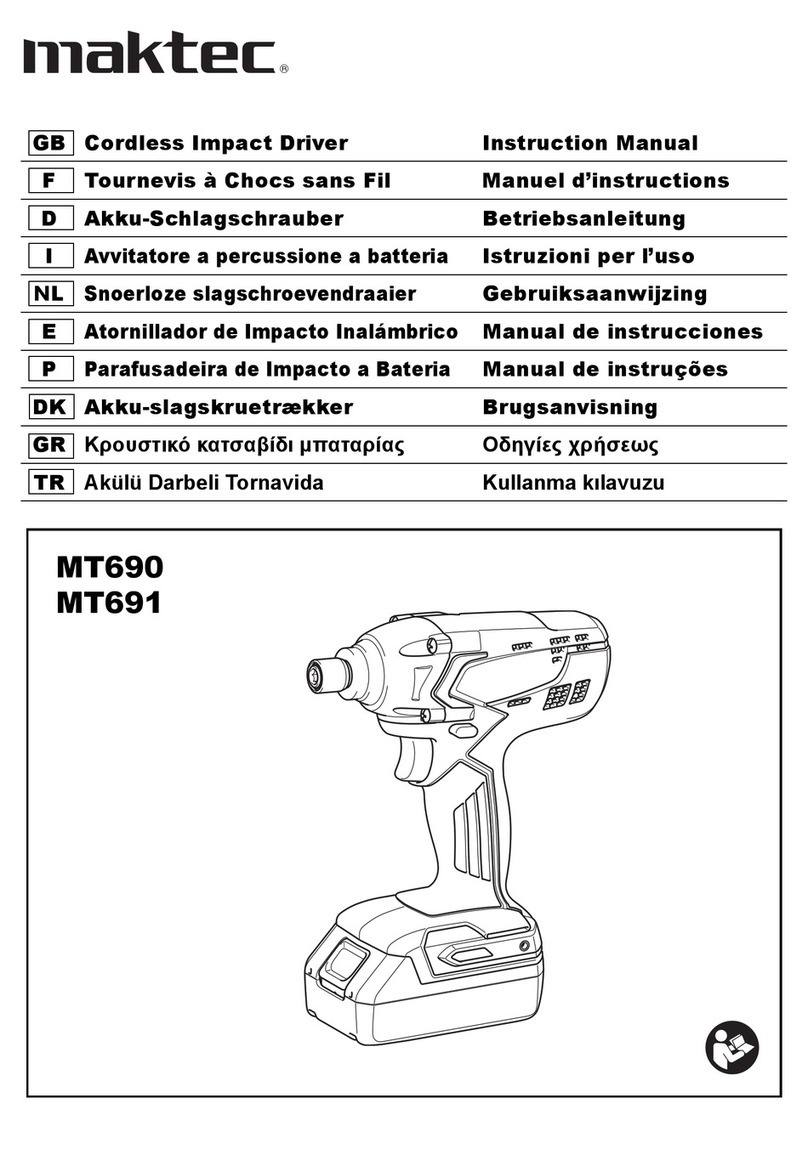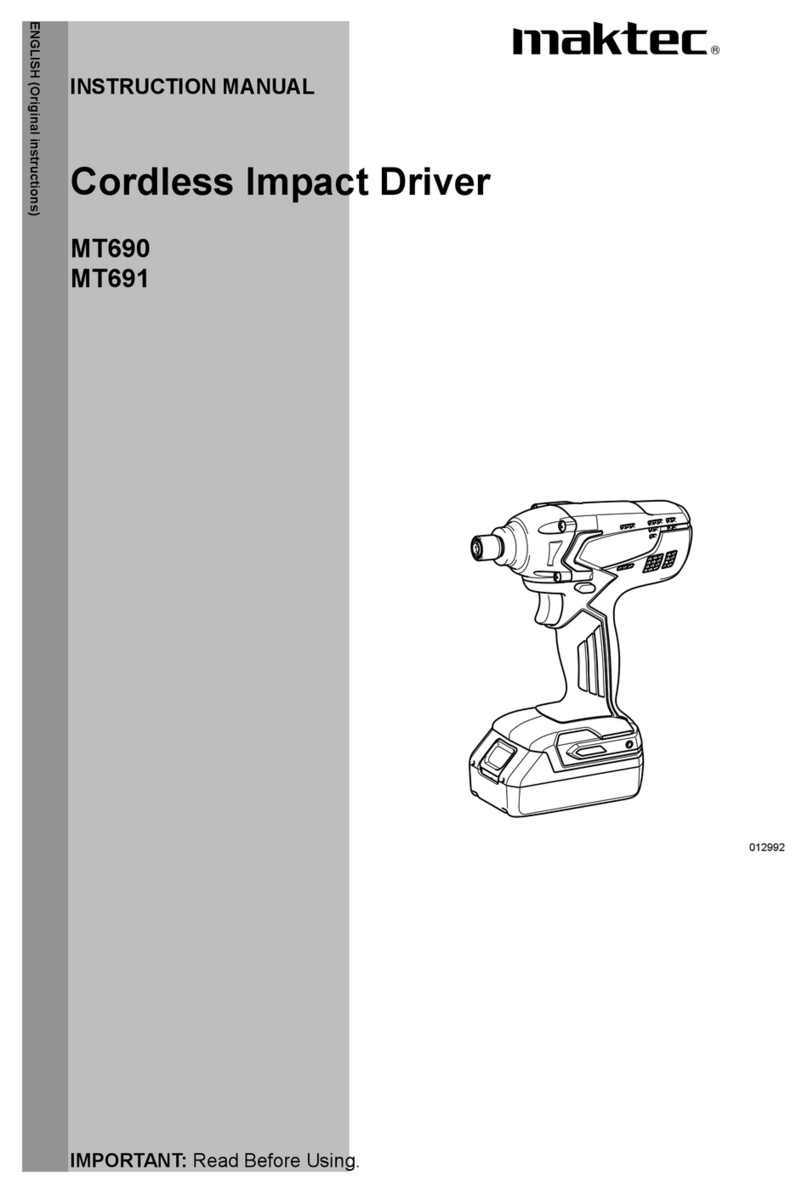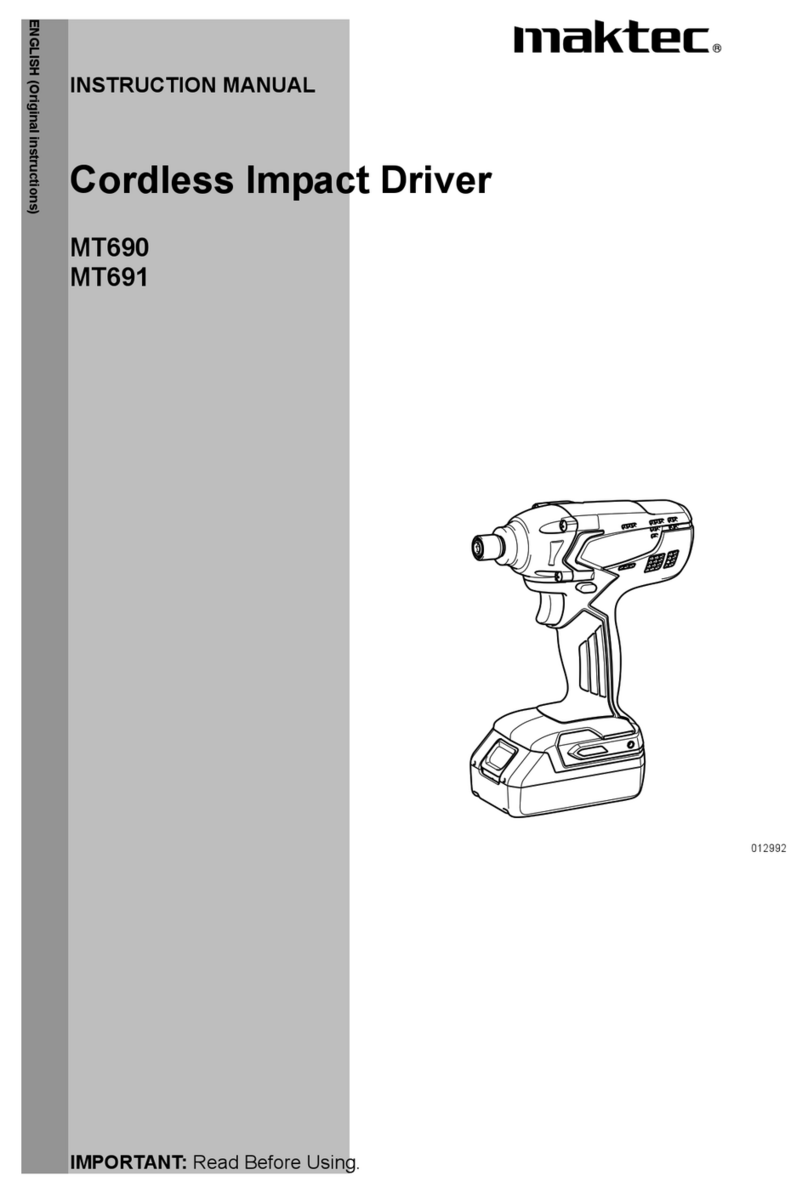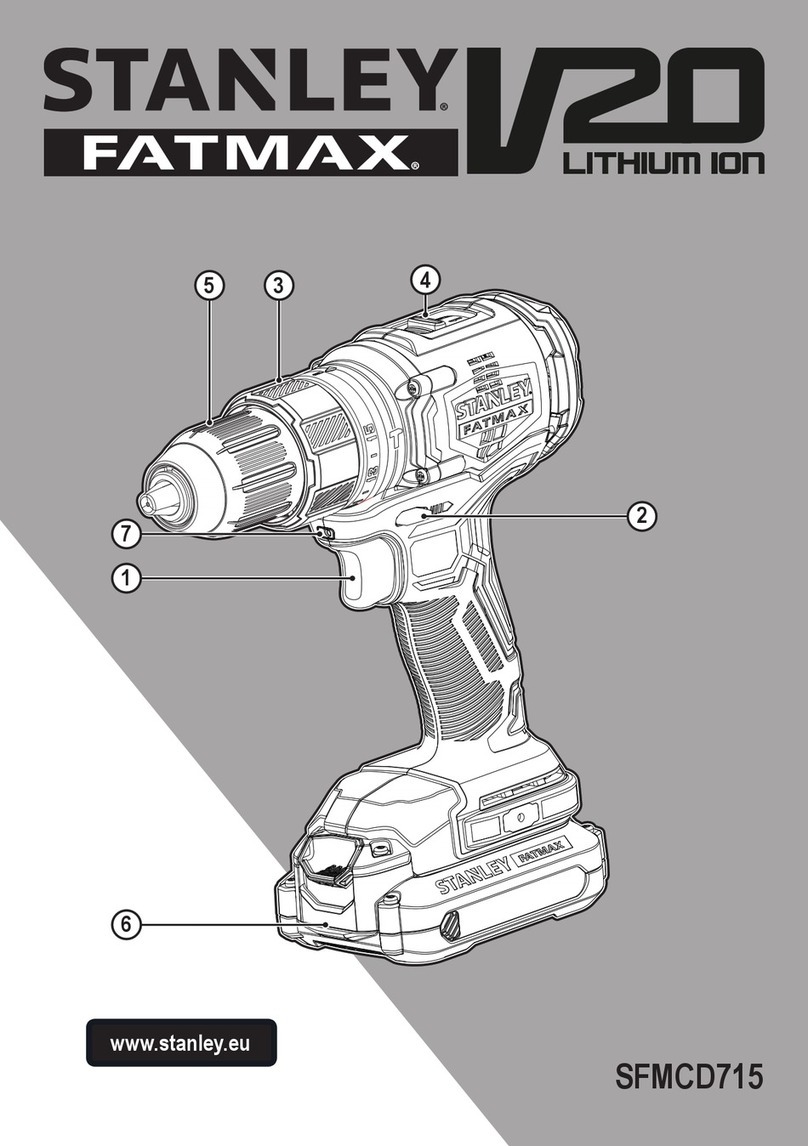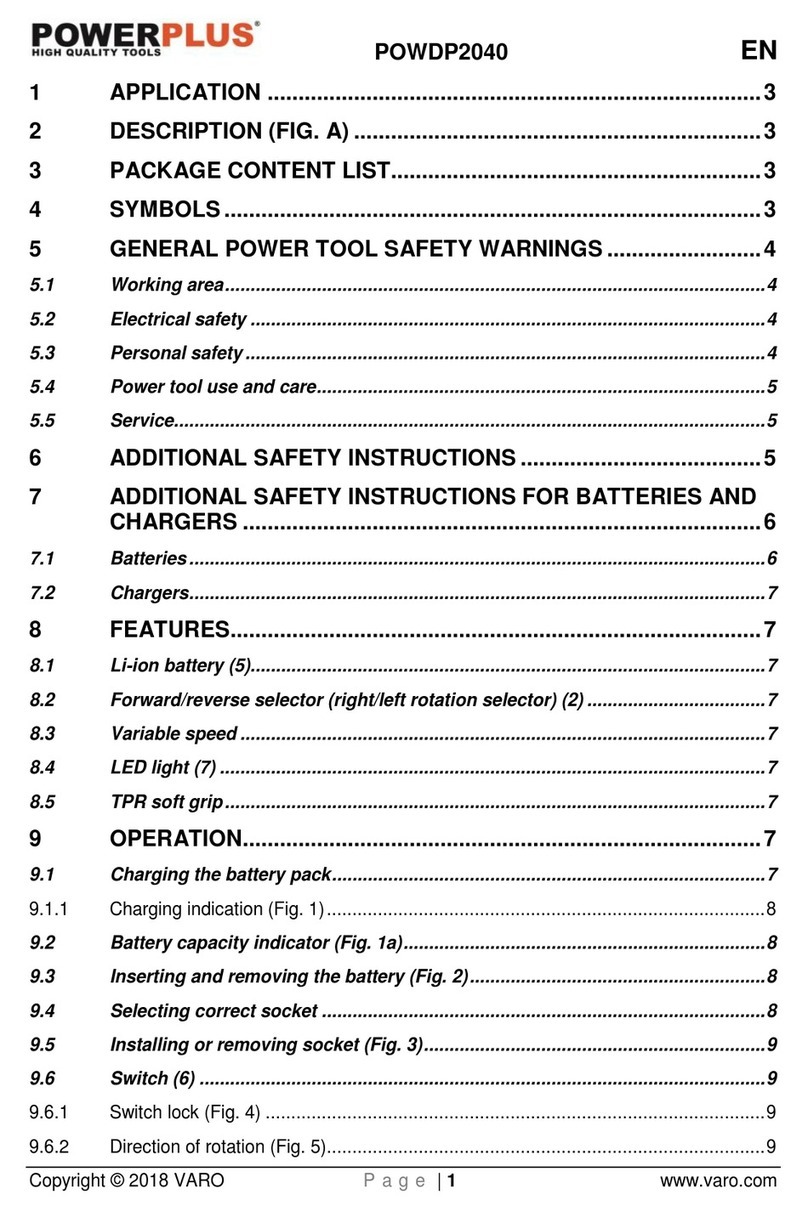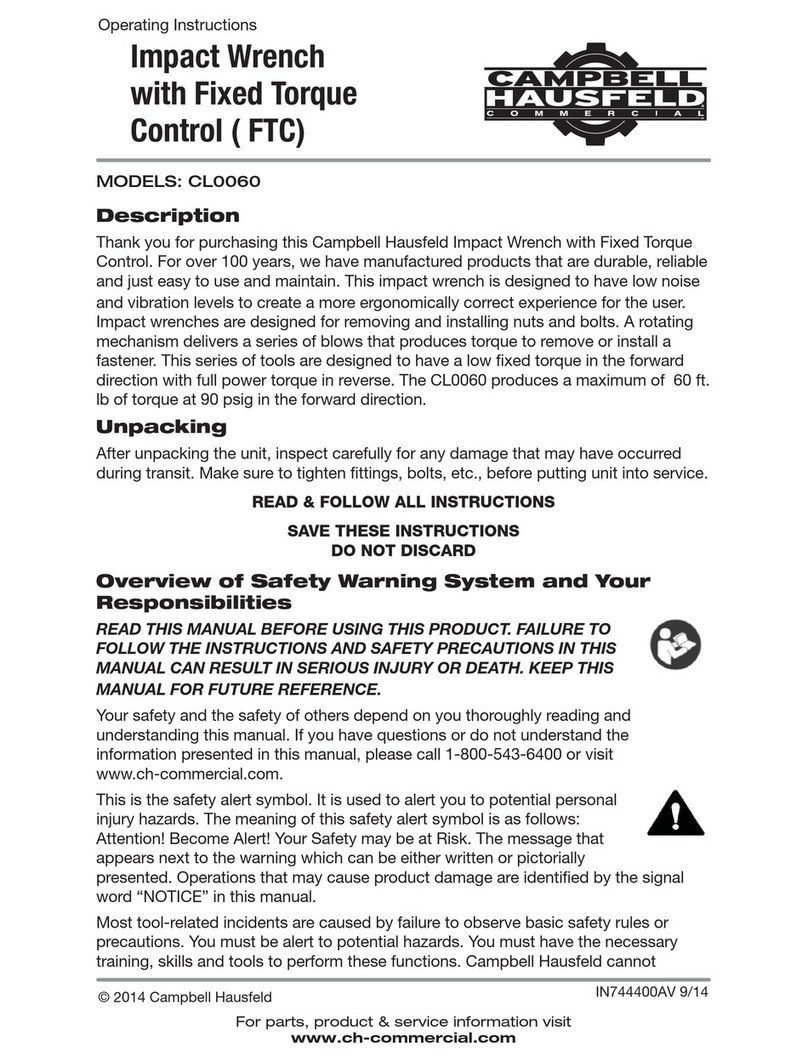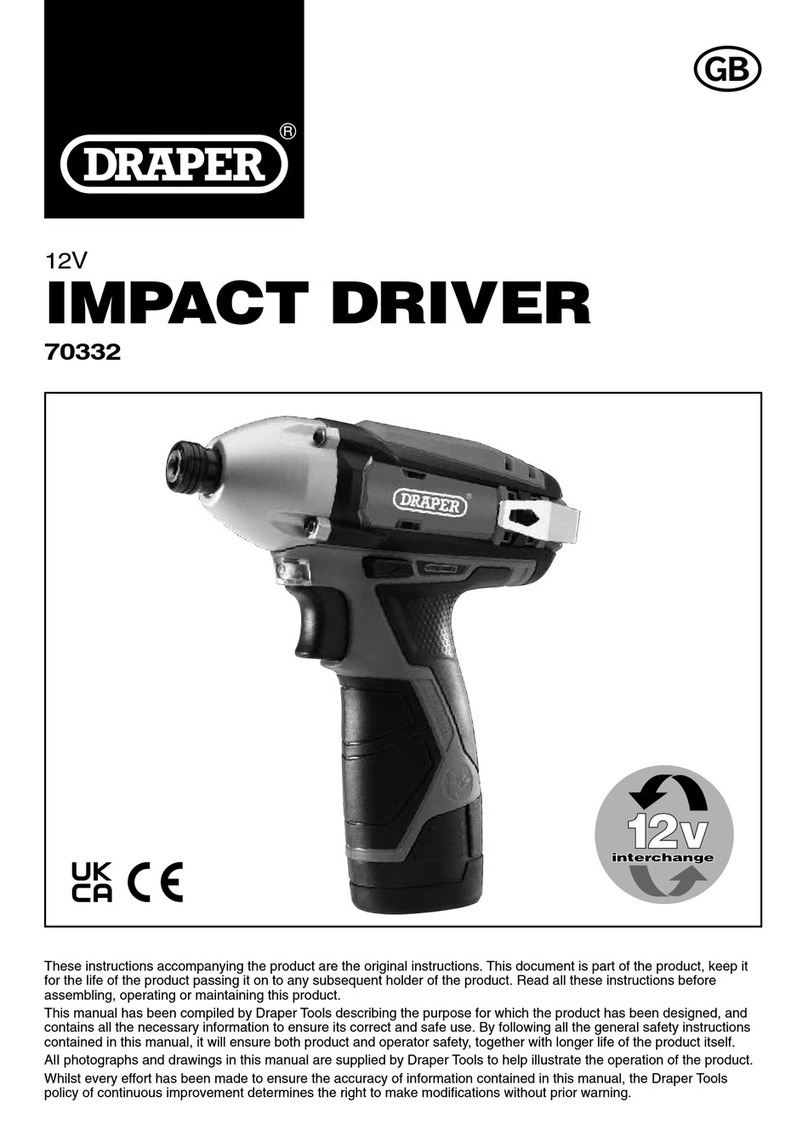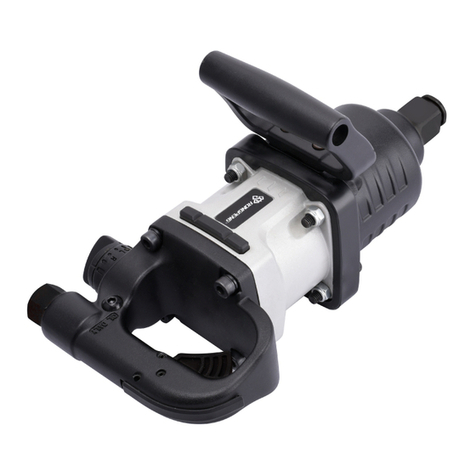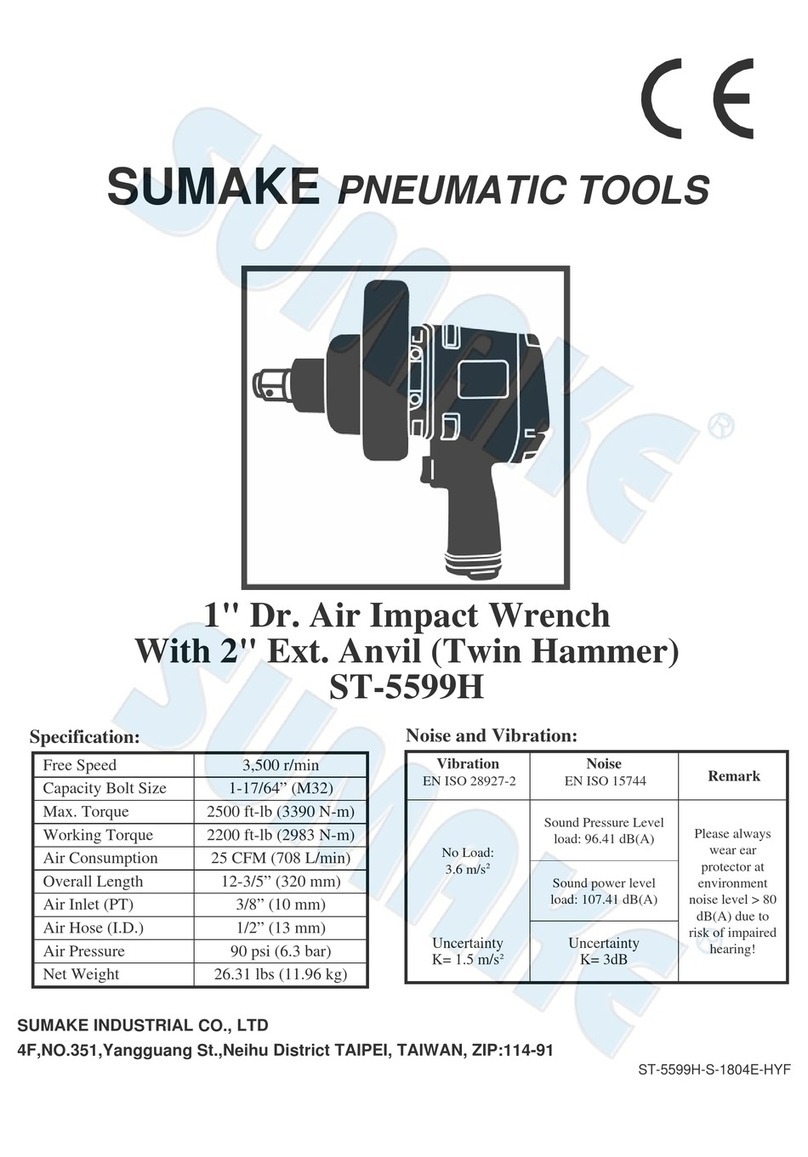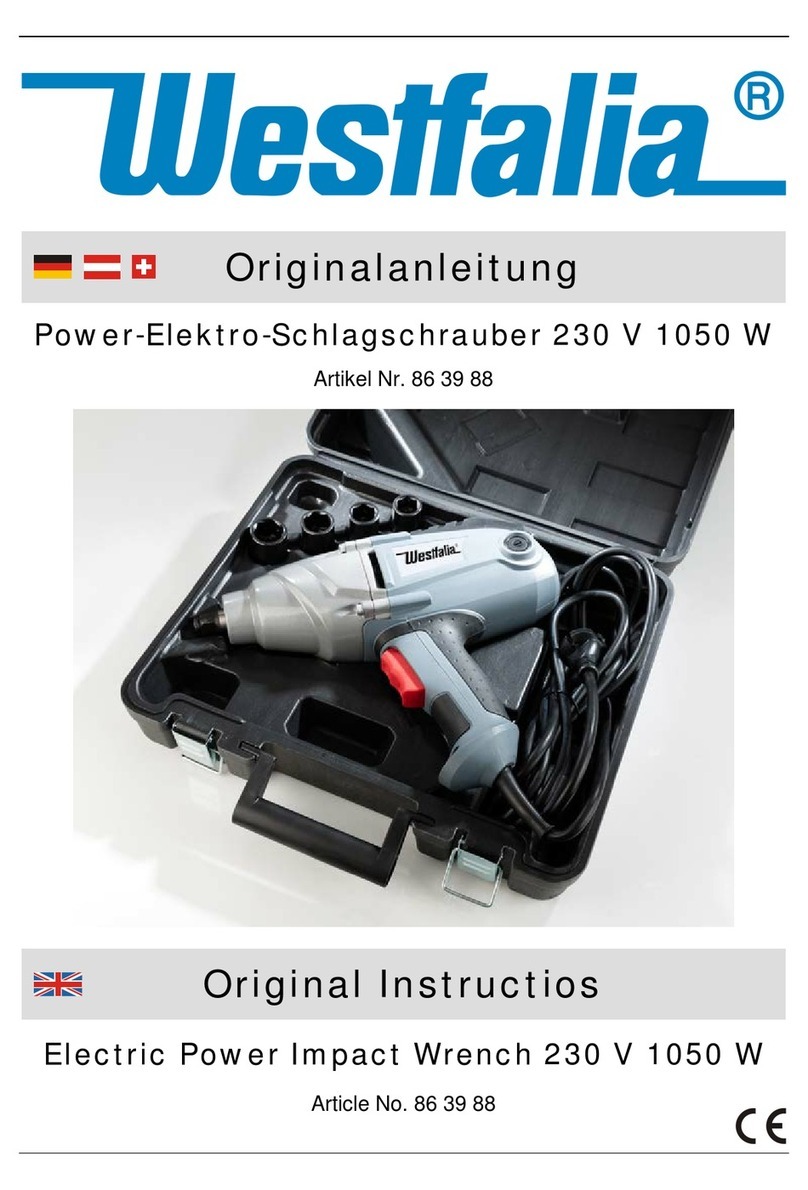Maktec MT690 User manual

GB Cordless Impact Driver Instruction Manual
F Tournevis à Chocs sans Fil Manuel d’instructions
D Akku-Schlagschrauber Betriebsanleitung
I
Avvitatore a percussione a batteria
Istruzioni per l’uso
NL
Snoerloze slagschroevendraaier
Gebruiksaanwijzing
E
Atornillador de Impacto Inalámbrico
Manual de instrucciones
P
Parafusadeira de Impacto a Bateria
Manual de instruções
DK Akku-slagskruetrækker Brugsanvisning
GR Κρουστικό κατσαβίδι μπαταρίας Οδηγίες χρήσεως
TR Akülü Darbeli Tornavida Kullanma kılavuzu
MT690
MT691

2
12
34
56
78
910
11
68
7
67
5
AB
1
2
3
4
012993 012994
012995 004521
012996
012999012998
012997

3
9
10 11
013029
013030
12
013031
(S)
N m
(kgf.cm)
.
14
17
15
16
.
N m
(kgf.cm)
(S)
13
14 15
16

4
ENGLISH (Original instructions)
Explanation of general view
1 Red indicator
2Button
3 Battery cartridge
4 Switch trigger
5 Reversing switch lever
6Bit
7 Sleeve
8 Bit-piece
9Groove
10 Hook
11 Screw
12 Vent
13 Standard bolt
14 Fastening torque
15 Proper fastening torque
16 Fastening time
17 High tensile bolt
SPECIFICATIONS
• Due to our continuing program of research and devel-
opment, the specifications herein are subject to change
without notice.
• Specifications and battery cartridge may differ from
country to country.
• Weight, with battery cartridge, according to EPTA-Pro-
cedure 01/2003
ENE033-1
Intended use
The tool is intended for screw driving in wood, metal and
plastic.
GEA010-1
General Power Tool Safety Warnings
WARNING Read all safety warnings and all
instructions. Failure to follow the warnings and
instructions may result in electric shock, fire and/or
serious injury.
Save all warnings and instructions for future
reference.
GEB054-1
CORDLESS IMPACT DRIVER SAFETY
WARNINGS
1. Hold power tool by insulated gripping surfaces,
when performing an operation where the fas-
tener may contact hidden wiring. Fasteners con-
tacting a “live” wire may make exposed metal parts
of the power tool “live” and could give the operator
an electric shock.
2. Always be sure you have a firm footing.
Be sure no one is below when using the tool in
high locations.
3. Hold the tool firmly.
4. Wear ear protectors.
SAVE THESE INSTRUCTIONS.
WARNING:
DO NOT let comfort or familiarity with product
(gained from repeated use) replace strict adherence
to safety rules for the subject product.
MISUSE or failure to follow the safety rules stated in
this instruction manual may cause serious personal
injury.
ENC009-1
IMPORTANT SAFETY INSTRUCTIONS
FOR BATTERY CARTRIDGE
1. Before using battery cartridge, read all instruc-
tions and cautionary markings on (1) battery
charger, (2) battery, and (3) product using bat-
tery.
2. Do not disassemble battery cartridge.
3. If operating time has become excessively
shorter, stop operating immediately. It may
result in a risk of overheating, possible burns
and even an explosion.
4. If electrolyte gets into your eyes, rinse them out
with clear water and seek medical attention right
away. It may result in loss of your eyesight.
5. Do not short the battery cartridge:
(1) Do not touch the terminals with any conduc-
tive material.
(2) Avoid storing battery cartridge in a con-
tainer with other metal objects such as nails,
coins, etc.
Model MT690 MT691
Capacities
Machine screw 4 mm – 8 mm
Standard bolt 5 mm – 14 mm
High tensile bolt 5 mm – 12 mm
No load speed (min–1) 0 – 2,400
Impacts per minute 0 – 3,000
Overall length 173 mm
Battery cartridge L1451 L1851
Net weight 1.4 kg 1.5 kg
Rated voltage D.C. 14.4 V D.C. 18 V

5
(3) Do not expose battery cartridge to water or
rain.
A battery short can cause a large current flow,
overheating, possible burns and even a break-
down.
6. Do not store the tool and battery cartridge in
locations where the temperature may reach or
exceed 50°C (122°F).
7. Do not incinerate the battery cartridge even if it
is severely damaged or is completely worn out.
The battery cartridge can explode in a fire.
8. Be careful not to drop or strike battery.
9. Do not use a damaged battery.
SAVE THESE INSTRUCTIONS.
Tips for maintaining maximum battery life
1. Charge the battery cartridge before completely
discharged.
Always stop tool operation and charge the bat-
tery cartridge when you notice less tool power.
2. Never recharge a fully charged battery cartridge.
Overcharging shortens the battery service life.
3. Charge the battery cartridge with room tempera-
ture at 10°C – 40°C (50°F – 104°F). Let a hot bat-
tery cartridge cool down before charging it.
FUNCTIONAL DESCRIPTION
CAUTION:
• Always be sure that the tool is switched off and the bat-
tery cartridge is removed before adjusting or checking
function on the tool.
Installing or removing battery cartridge (Fig. 1)
CAUTION:
• Always switch off the tool before installing or removing
of the battery cartridge.
• Hold the tool and the battery cartridge firmly when
installing or removing battery cartridge. Failure to hold
the tool and the battery cartridge firmly may cause
them to slip off your hands and result in damage to the
tool and battery cartridge and a personal injury.
To remove the battery cartridge, slide it from the tool
while sliding the button on the front of the cartridge.
To install the battery cartridge, align the tongue on the
battery cartridge with the groove in the housing and slip it
into place. Insert it all the way until it locks in place with a
little click. If you can see the red indicator on the upper
side of the button, it is not locked completely.
CAUTION:
• Always install the battery cartridge fully until the red
indicator cannot be seen. If not, it may accidentally fall
out of the tool, causing injury to you or someone
around you.
• Do not install the battery cartridge forcibly. If the car-
tridge does not slide in easily, it is not being inserted
correctly.
Battery protection system
The tool is equipped with a battery protection system.
This system automatically cuts off power to the motor to
extend battery life.
The tool will automatically stop during operation if the
tool and/or battery are placed under one of the following
conditions:
• Overloaded:
The tool is operated in a manner that causes it to draw
an abnormally high current.
In this situation, release the switch trigger on the tool
and stop the application that caused the tool to become
overloaded. Then pull the switch trigger again to
restart.
If the tool does not start, the battery is overheated. In
this situation, let the battery cool before pulling the
switch trigger again.
• Low battery voltage:
The remaining battery capacity is too low and the tool
will not operate. If you pull the switch trigger, the motor
runs again but stops soon. In this situation, remove and
recharge the battery.
Switch action (Fig. 2)
CAUTION:
• Before inserting the battery cartridge into the tool,
always check to see that the switch trigger actuates
properly and returns to the “OFF” position when
released.
To start the tool, simply pull the switch trigger. Tool speed
is increased by increasing pressure on the switch trigger.
Release the switch trigger to stop.
Reversing switch action (Fig. 3)
This tool has a reversing switch to change the direction
of rotation. Depress the reversing switch lever from the A
side for clockwise rotation or from the B side for counter-
clockwise rotation.
When the reversing switch lever is in the neutral position,
the switch trigger cannot be pulled.
CAUTION:
• Always check the direction of rotation before operation.
• Use the reversing switch only after the tool comes to a
complete stop. Changing the direction of rotation
before the tool stops may damage the tool.
• When not operating the tool, always set the reversing
switch lever to the neutral position.
ASSEMBLY
CAUTION:
• Always be sure that the tool is switched off and the bat-
tery cartridge is removed before carrying out any work
on the tool.
Installing or removing driver bit or socket bit
(Fig. 4)
Use only bits that has inserting portion shown in the fig-
ure.
For tool with shallow bit hole
006348
A=12 mm
B=9 mm
Use only these type of bit. Follow the
procedure (1).
(Note) Bit-piece is not necessary.

6
For tool with deep bit hole
011405
Procedure (1)
To install the bit, pull the sleeve in the direction of the
arrow and insert the bit into the sleeve as far as it will go.
Then release the sleeve to secure the bit. (Fig. 5)
Procedure (2)
In addition to the procedure (1) above, insert the bit-
piece into the sleeve with its pointed end facing in.
To remove the bit, pull the sleeve in the direction of the
arrow and pull the bit out. (Fig. 6)
NOTE:
• If the bit is not inserted deep enough into the sleeve,
the sleeve will not return to its original position and the
bit will not be secured. In this case, try re-inserting the
bit according to the instructions above.
• After inserting the bit, make sure that it is firmly
secured. If it comes out, do not use it.
Hook (optional accessory) (Fig. 7)
The hook is convenient for temporarily hanging the tool.
This can be installed on either side of the tool.
To install the hook, insert it into a groove in the tool hous-
ing on either side and then secure it with a screw. To
remove, loosen the screw and then take it out.
OPERATION
CAUTION:
• Do not cover vents, or it may cause overheating and
damage to the tool. (Fig. 8 & 9)
The proper fastening torque may differ depending upon
the kind or size of the screw/bolt, the material of the
workpiece to be fastened, etc. The relation between fas-
tening torque and fastening time is shown in the figures.
(Fig. 10 & 11)
Hold the tool firmly and place the point of the driver bit in
the screw head. Apply forward pressure to the tool to the
extent that the bit will not slip off the screw and turn the
tool on to start operation.
NOTE:
• Use the proper bit for the head of the screw/bolt that
you wish to use.
• When fastening M8 or smaller screw, carefully adjust
pressure on the switch trigger so that the screw is not
damaged.
• Hold the tool pointed straight at the screw.
• If the impact force is too strong you tighten the screw
for a time longer than shown in the figures, the screw or
the point of the driver bit may be overstressed,
stripped, damaged, etc. Before starting your job,
always perform a test operation to determine the
proper fastening time for your screw.
The fastening torque is affected by a wide variety of fac-
tors including the following. After fastening, always check
the torque with a torque wrench.
1. When the battery cartridge is discharged almost
completely, voltage will drop and the fastening
torque will be reduced.
2. Driver bit or socket bit
Failure to use the correct size driver bit or socket bit
will cause a reduction in the fastening torque.
3. Bolt
• Even though the torque coefficient and the class of
bolt are the same, the proper fastening torque will
differ according to the diameter of bolt.
• Even though the diameters of bolts are the same,
the proper fastening torque will differ according to
the torque coefficient, the class of bolt and the bolt
length.
4. The manner of holding the tool or the material of
driving position to be fastened will affect the torque.
5. Operating the tool at low speed will cause a reduc-
tion in the fastening torque.
MAINTENANCE
CAUTION:
• Always be sure that the tool is switched off and the bat-
tery cartridge is removed before attempting to perform
inspection or maintenance except for the following trou-
bleshooting related to the light.
• Never use gasoline, benzine, thinner, alcohol or the
like. Discoloration, deformation or cracks may result.
To maintain product SAFETY and RELIABILITY, repairs,
any other maintenance or adjustment should be per-
formed by Makita Authorized Service Centers, always
using Makita replacement parts.
OPTIONAL ACCESSORIES
CAUTION:
• These accessories or attachments are recommended
for use with your Makita tool specified in this manual.
The use of any other accessories or attachments might
present a risk of injury to persons. Only use accessory
or attachment for its stated purpose.
If you need any assistance for more details regarding
these accessories, ask your local Makita Service Center.
• Makita genuine battery and charger
NOTE:
• Some items in the list may be included in the tool pack-
age as standard accessories. They may differ from
country to country.
A=17 mm
B=14 mm
To install these types of bits, follow the
procedure (1).
A=12 mm
B=9 mm
To install these types of bits, follow the
procedure (2).
(Note) Bit-piece is necessary for install-
ing the bit.

7
ENG905-1
Noise
The typical A-weighted noise level determined according
to EN60745:
Model MT690
Sound pressure level (LpA): 93 dB (A)
Sound power level (LWA): 104 dB (A)
Uncertainty (K): 3 dB (A)
Model MT691
Sound pressure level (LpA): 93 dB (A)
Sound power level (LWA): 104 dB (A)
Uncertainty (K): 3 dB (A)
Wear ear protection
ENG900-1
Vibration
The vibration total value (tri-axial vector sum) determined
according to EN60745:
Model MT690
Work mode: impact tightening of fasteners of the
maximum capacity of the tool
Vibration emission (ah): 9.0 m/s2
Uncertainty (K): 1.5 m/s2
Model MT691
Work mode: impact tightening of fasteners of the
maximum capacity of the tool
Vibration emission (ah): 8.0 m/s2
Uncertainty (K): 1.5 m/s2
ENG901-1
• The declared vibration emission value has been mea-
sured in accordance with the standard test method and
may be used for comparing one tool with another.
• The declared vibration emission value may also be
used in a preliminary assessment of exposure.
WARNING:
• The vibration emission during actual use of the power
tool can differ from the declared emission value
depending on the ways in which the tool is used.
• Be sure to identify safety measures to protect the oper-
ator that are based on an estimation of exposure in the
actual conditions of use (taking account of all parts of
the operating cycle such as the times when the tool is
switched off and when it is running idle in addition to
the trigger time).
ENH101-15
For European countries only
EC Declaration of Conformity
We Makita Corporation as the responsible
manufacturer declare that the following Makita
machine(s):
Designation of Machine: Cordless Impact Driver
Model No./ Type: MT690, MT691
are of series production and
Conforms to the following European Directives:
2006/42/EC
And are manufactured in accordance with the following
standards or standardised documents:
EN60745
The technical documentation is kept by our authorised
representative in Europe who is:
Makita International Europe Ltd.
Michigan Drive, Tongwell,
Milton Keynes, Bucks MK15 8JD, England
14.12.2011
Tomoyasu Kato
Director
Makita Corporation
3-11-8, Sumiyoshi-cho,
Anjo, Aichi, 446-8502, JAPAN

21
NEDERLANDS (Originele instructies)
Verklaring van algemene gegevens
1 Rode indicator
2Knop
3 Accu
4 Trekkerschakelaar
5 Omkeerschakelaar
6 Schroefbit
7 Klembus
8 Bit-adapter
9 Groef
10 Ophanghaak
11 Schroef
12 Ventilatiesleuven
13 Standaardbout
14 Aandraaikoppel
15 Juist aandraaikoppel
16 Aandraaitijd
17 Bout met hoge trekvastheid
TECHNISCHE GEGEVENS
• In verband met ononderbroken research en
ontwikkeling behouden wij ons het recht voor
bovenstaande technische gegevens te wijzigen zonder
voorafgaande kennisgeving.
• De technische gegevens en de accu kunnen van land
tot land verschillen.
• Gewicht, inclusief accu, volgens de EPTA-procedure
01/2003
ENE033-1
Doeleinden van gebruik
Dit gereedschap is bedoeld voor het indraaien van
schroeven in hout, metaal en plastic.
GEA010-1
Algemene veiligheidswaarschuwingen voor
elektrisch gereedschap
WAARSCHUWING! Lees alle veiligheidswaar-
schuwingen en alle instructies. Het niet volgen van de
waarschuwingen en instructies kan leiden tot elektrische
schokken, brand en/of ernstig letsel.
Bewaar alle waarschuwingen en instructies om in de
toekomst te kunnen raadplegen.
GEB054-1
VEILIGHEIDSVOORSCHRIFTEN VOOR DE
SNOERLOZE SLAG-SCHROEVENDRAAIER
1. Houd elektrisch gereedschap alleen vast aan de
geïsoleerde handgrepen, wanneer u werkt op
plaatsen waar het bevestigingsmateriaal met
verborgen bedrading in aanraking kan komen.
Als een draad die onder stroom staat wordt
beschadigd, kunnen de metalen delen van het
gereedschap ook onder stroom komen te staan en
kunt u een gevaarlijke elektrische schok krijgen.
2. Zorg ook altijd dat u stevig op een solide bodem
staat.
Let bij het werken op hoge plaatsen op dat er
zich niemand recht onder u bevindt.
3. Houd het gereedschap stevig vast.
4. Draag oorbeschermers.
BEWAAR DEZE VOORSCHRIFTEN.
WAARSCHUWING:
Laat u NIET misleiden door een vals gevoel van
comfort en bekendheid met het gereedschap (na
veelvuldig gebruik) en neem alle
veiligheidsvoorschriften van het betreffende
gereedschap altijd strikt in acht.
VERKEERD GEBRUIK of het niet naleven van de
veiligheidsvoorschriften in deze gebruiksaanwijzing
kan leiden tot ernstige verwondingen.
ENC009-1
BELANGRIJKE
VEILIGHEIDSVOORSCHRIFTEN
VOOR ACCU
1. Lees alle voorschriften en waarschuwingen op
(1) de acculader, (2) de accu, en (3) het product
waarvoor de accu wordt gebruikt, aandachtig
door alvorens de acculader in gebruik te nemen.
2. Neem de accu niet uit elkaar.
3. Als de gebruiksduur van het gereedschap erg
kort is geworden, staakt u dan onmiddellijk het
gebruik. Er bestaat kans op oververhitting, met
gevaar voor brand of zelfs een explosie.
4. Als er accuvloeistof in uw ogen komt, wast u die
dan onmiddellijk uit met volop water en
raadpleeg dan onverwijld een arts. Uw
gezichtsvermogen zou ernstig aangetast kunnen
worden.
Model MT690 MT691
Capaciteiten
Kolomschroef 4 mm – 8 mm
Standaardbout 5 mm – 14 mm
Bout met hoge trekvastheid 5 mm – 12 mm
Toerental onbelast (min–1) 0 – 2 400
Slagen per minuut 0 – 3 000
Totale lengte 173 mm
Accu L1451 L1851
Nettogewicht 1,4 kg 1,5 kg
Nominale spanning D.C. 14,4 V D.C. 18 V

22
5. Voorkom kortsluiting van de accu:
(1) Raak de accuklemmen nooit aan met een
geleidend materiaal.
(2) Bewaar de accu niet in een bak waarin
andere metalen voorwerpen zoals spijkers,
munten e.d. worden bewaard.
(3) Stel de accu niet bloot aan water of regen.
Kortsluiting van de accu kan oorzaak zijn van
een grote stroomafgifte, oververhitting,
brandwonden, en zelfs defecten.
6. Bewaar het gereedschap en de accu niet op
plaatsen waar de temperatuur kan oplopen tot
50°C of hoger.
7. Werp de accu nooit in het vuur, ook niet wanneer
hij zwaar beschadigd of volledig versleten is. De
accu kan namelijk ontploffen in het vuur.
8. Wees voorzichtig dat u de accu niet laat vallen
en hem niet blootstelt aan schokken of stoten.
9. Gebruik nooit een beschadigde accu.
BEWAAR DEZE VOORSCHRIFTEN.
Tips voor een maximale levensduur van de accu
1. Laad de accu op voordat hij volledig ontladen is.
Stop het gebruik van het gereedschap en laad de
accu op telkens wanneer u vaststelt dat het
vermogen van het gereedschap is afgenomen.
2. Laad een volledig opgeladen accu nooit opnieuw
op.
Als u de accu te veel oplaadt, zal hij minder lang
meegaan.
3. Laad de accu op bij een kamertemperatuur
tussen 10°C en 40°C. Laat een warme accu
afkoelen alvorens hem op te laden.
BESCHRIJVING VAN DE FUNCTIES
LET OP:
• Zorg altijd dat het gereedschap is uitgeschakeld en de
accu ervan is verwijderd alvorens de functies op het
gereedschap af te stellen of te controleren.
Aanbrengen en verwijderen van de accu (Fig. 1)
LET OP:
• Schakel altijd het gereedschap uit voordat u de accu
aanbrengt of verwijdert.
• Houd het gereedschap en de accu stevig vast wanneer
u de accu aanbrengt of verwijdert. Als u het
gereedschap en de accu niet stevig vasthoudt, zou er
iets uit uw handen kunnen glippen, met gevaar voor
schade aan het gereedschap of de accu en eventuele
verwonding.
Om de accu te verwijderen, schuift u deze uit het
gereedschap los terwijl u de knop voorop de accu
ingedrukt houdt.
Voor het aanbrengen van de accu plaatst u de tong van
de accu in de groef van de behuizing en schuift u de
accu op zijn plaats. Schuif de accu er altijd volledig in
totdat die op zijn plaats vast klikt. Wanneer de rode
indicator op de bovenkant van de knop nog zichtbaar is,
zit de accu niet volledig erin.
LET OP:
• Schuif de accu volledig erin totdat de rode indicator niet
meer zichtbaar is. Als u dit nalaat, zou de accu uit het
gereedschap kunnen vallen en uzelf of anderen
kunnen verwonden.
• Druk de accu er niet met kracht in. Als de accu er niet
soepel in gaat, houdt u die waarschijnlijk in de
verkeerde stand.
Accubeveiligingssysteem
Dit gereedschap is voorzien van een
accubeveiligingssysteem. Dat kan automatisch de
stroomtoevoer naar de motor afsluiten om de levensduur
van de accu te verlengen.
Het gereedschap kan tijdens gebruik automatisch
stoppen wanneer het gereedschap en/of de accu aan
één van de volgende omstandigheden wordt
blootgesteld:
• Overbelasting:
Als het gereedschap wordt gebruikt op een manier die
een abnormaal hoge stroomsterkte vergt.
In dit geval laat u de trekkerschakelaar van het
gereedschap los en verhelpt u de oorzaak van de
overbelasting nadat het werktuig gestopt is. Vervolgens
drukt u de trekkerschakelaar opnieuw in om weer te
starten.
Als het gereedschap niet start, kan de accu oververhit
zijn. In dit geval laat u eerst de accu afkoelen voordat u
de trekkerschakelaar weer indrukt.
• Onvoldoende accuspanning:
Als de resterende accuspanning onvoldoende is, zal
het gereedschap niet starten. Als u de
trekkerschakelaar indrukt, gaat de motor weer draaien,
maar zal al gauw weer stoppen. In dat geval verwijdert
u de accu en laadt u die opnieuw op.
Schakelaarwerking (Fig. 2)
LET OP:
• Controleer voordat u de accu in het gereedschap
plaatst altijd eerst of de trekkerschakelaar goed werkt
en bij loslaten direct naar de “OFF” stand terugkeert.
Om het gereedschap te starten, drukt u enkel de
trekkerschakelaar in. U kunt de snelheid van het
gereedschap verhogen door de trekkerschakelaar harder
in te drukken. Laat de trekkerschakelaar los om te
stoppen.
Werking van de omkeerschakelaar (Fig. 3)
Dit gereedschap heeft een omkeerschakelaar voor het
veranderen van de draairichting. Druk de
omkeerschakelaar in vanaf kant A voor rechtse,
kloksgewijze draairichting, of vanaf kant B voor linkse
draairichting.
Wanneer de omkeerschakelaar in de neutrale stand
staat, kan de trekkerschakelaar niet worden ingedrukt.
LET OP:
• Controleer voordat u gaat werken altijd eerst de
draairichting van het gereedschap.
• Gebruik de omkeerschakelaar alleen nadat het
gereedschap helemaal tot stilstand is gekomen. Als u
de draairichting verandert terwijl het gereedschap nog
draait, kan het gereedschap beschadigd raken.
• Zet de omkeerschakelaar altijd in de neutrale stand
wanneer u het gereedschap niet gebruikt.

23
INEENZETTEN
LET OP:
• Controleer altijd of het gereedschap is uitgeschakeld
en de accu ervan is verwijderd alvorens enig werk aan
het gereedschap uit te voeren.
Aanbrengen of verwijderen van het schroefbit of
de schroefdop (Fig. 4)
Gebruik uitsluitend bits met een insteekgedeelte zoals
aangegeven in de afbeelding.
Voor gereedschappen met een ondiepe
bitinsteekopening
006348
Voor gereedschappen met een diepe
bitinsteekopening
011405
Procedure (1)
Om het bit te plaatsen, trekt u de klembus in de richting
van de pijl en steekt u het bit zo ver mogelijk in de bus.
Laat daarna de bus los om het bit te vergrendelen.
(Fig. 5)
Procedure (2)
In aanvulling op de bovenstaande procedure (1), steekt u
de bit-adapter met het puntige uiteinde eerst in de
klembus.
Om het bit te verwijderen, trekt u de klembus in de
richting van de pijl en trekt u het bit er uit. (Fig. 6)
OPMERKING:
• Als het bit niet diep genoeg in de klembus wordt
gestoken, zal de bus niet naar haar oorspronkelijke
positie terugkeren en zal het bit niet goed vastzitten. In
dat geval dient u het bit opnieuw erin te steken volgens
de bovenstaande aanwijzingen.
• Nadat u het bit in de bus hebt gestoken, controleert u of
het bit stevig vast zit. Als het bit uit de klembus
loskomt, mag u het bit niet gebruiken.
Haak (optionele accessoire) (Fig. 7)
De ophanghaak kan handig zijn om het gereedschap
tussendoor even op te hangen. Deze is aan beide kanten
van het gereedschap te bevestigen.
Om de ophanghaak te bevestigen, steekt u die in één
van de groeven aan weerszijden van het
gereedschapshuis en zet u de haak met een schroef
vast. Om de ophanghaak te verwijderen, draait u de
schroef los en trekt u de haak er uit.
BEDIENING
LET OP:
• Zorg dat de ventilatiesleuven nergens door afgedekt
worden, om oververhitting en schade aan het
gereedschap te voorkomen. (Fig. 8 en 9)
Het juiste aandraaikoppel kan verschillen afhankelijk van
het soort en de maat van de schroef/bout, het materiaal
van het te bevestigen werkstuk, enz. De verhouding
tussen het aandraaikoppel en de aandraaitijd is
aangegeven in de afbeeldingen. (Fig. 10 en 11)
Houd het gereedschap stevig vast en plaats de punt van
het schroefbit in de schroefkop. Oefen zoveel kracht op
het gereedschap uit als nodig is om het schroefbit op zijn
plaats te houden, en schakel het gereedschap in om het
werk te starten.
OPMERKING:
• Gebruik altijd het bit dat geschikt is voor de kop van de
aan te draaien schroef/bout.
• Bij het vastdraaien van M8 of kleinere schroeven dient
u de druk op de trekkerschakelaar voorzichtig te
doseren om de schroef niet te beschadigen.
• Houd het gereedschap vooral recht op de schroef.
• Als de slagkracht te groot is, zal de schroef langer
worden aangedraaid dan in de schema’s wordt
getoond en dan kan de schroef of de punt van het
schroefbit vervormd of beschadigd worden. Voordat u
aan het werk gaat, dient u altijd even proef te draaien,
om de juiste aandraaitijd voor uw type schroef te
bepalen.
Het aandraaikoppel wordt beïnvloed door een groot
aantal factoren, waaronder de volgende. Controleer na
het vastdraaien altijd het aandraaikoppel met een
momentsleutel.
1. Wanneer de accu bijna leeg is, neemt de spanning
af en vermindert het aandraaikoppel.
2. Schroefbit of schroefdop
Het aandraaikoppel vermindert als u niet een
schroefbit of schroefdop van de juiste maat gebruikt.
3. Bout
• Zelfs wanneer de koppelcoëfficiënt overeenkomt
met de boutklasse, hangt het juiste
aandraaikoppel af van de boutdiameter.
• Zelfs wanneer de boutdiameters gelijk zijn, hangt
het juiste aandraaikoppel af van de
koppelcoëfficiënt, de boutklasse en de boutlengte.
4. De manier van vasthouden van het gereedschap en
de positie waar de schroef in het materiaal wordt
gedraaid, hebben een invloed op het
aandraaikoppel.
5. Bij lagere toerentallen wordt ook het aandraaikoppel
kleiner.
ONDERHOUD
LET OP:
• Zorg altijd dat het gereedschap is uitgeschakeld en de
accu is verwijderd voordat u inspectie of onderhoud
gaat verrichten, uitgezonderd de volgende
controlepunten met betrekking tot het lampje.
• Gebruik nooit benzine, wasbenzine, thinner, alcohol en
dergelijke. Hierdoor kunnen verkleuring, vervormingen
en barsten worden veroorzaakt.
A=12 mm
B=9 mm
Gebruik uitsluitend dit soort bits. Volg
procedure (1).
(Opmerking) De bit-adapter is niet
nodig.
A=17 mm
B=14 mm
Om deze typen bits te plaatsen, volgt u
procedure (1).
A=12 mm
B=9 mm
Om deze typen bits te plaatsen, volgt u
procedure (2).
(Opmerking) De bit-adapter is nodig om
het bit te plaatsen.

24
Om de VEILIGHEID en BETROUWBAARHEID van het
product te handhaven, dienen alle reparaties en alle
andere onderhoudswerkzaamheden of afstellingen te
worden uitgevoerd door een erkend Makita
Servicecentrum, en dat uitsluitend met gebruik van
Makita vervangingsonderdelen.
OPTIONELE ACCESSOIRES
LET OP:
• Deze accessoires of hulpstukken worden aanbevolen
voor gebruik met het Makita gereedschap dat in deze
gebruiksaanwijzing is beschreven. Bij gebruik van
andere accessoires of hulpstukken bestaat er gevaar
voor persoonlijke verwonding. Gebruik de accessoires
of hulpstukken uitsluitend voor hun bestemde doel.
Raadpleeg het dichtstbijzijnde Makita servicecentrum
voor verder advies of bijzonderheden omtrent deze
accessoires.
• Originele Makita accu en acculader
OPMERKING:
• Sommige onderdelen in deze lijst kunnen bij het
gereedschap zijn meeverpakt als standaard-
accessoires. Deze kunnen van land tot land
verschillen.
ENG905-1
Geluidsniveau
De typisch, A-gewogen geluidsniveaus vastgesteld
volgens EN60745:
Model MT690
Geluidsdrukniveau (LpA): 93 dB (A)
Geluidsenergie-niveau (LWA): 104 dB (A)
Onnauwkeurigheid (K): 3 dB (A)
Model MT691
Geluidsdrukniveau (LpA): 93 dB (A)
Geluidsenergie-niveau (LWA): 104 dB (A)
Onnauwkeurigheid (K): 3 dB (A)
Draag oorbeschermers
ENG900-1
Trilling
De totaalwaarde van de trillingen (triaxiale vectorsom)
vastgesteld volgens EN60745:
Model MT690
Toepassing: slagschroevendraaien van
bevestigingsmiddelen met de maximale capaciteit
van het gereedschap
Trillingsemissie (ah): 9,0 m/s2
Onnauwkeurigheid (K): 1,5 m/s2
Model MT691
Toepassing: slagschroevendraaien van
bevestigingsmiddelen met de maximale capaciteit
van het gereedschap
Trillingsemissie (ah): 8,0 m/s2
Onnauwkeurigheid (K): 1,5 m/s2
ENG901-1
• De opgegeven trillingsemissiewaarde is gemeten
volgens de standaardtestmethode en kan worden
gebruikt om dit gereedschap te vergelijken met andere
gereedschappen.
• De opgegeven trillingsemissiewaarde kan ook worden
gebruikt voor een beoordeling vooraf van de
blootstelling.
WAARSCHUWING:
• De trillingsemissie tijdens het gebruik van het elektrisch
gereedschap in de praktijk kan verschillen van de
opgegeven trillingsemissiewaarde afhankelijk van de
manier waarop het gereedschap wordt gebruikt.
• Zorg ervoor dat veiligheidsmaatregelen worden
getroffen ter bescherming van de operator die zijn
gebaseerd op een schatting van de blootstelling onder
praktijkomstandigheden (rekening houdend met alle
fasen van de bedrijfscyclus, zoals de tijdsduur
gedurende welke het gereedschap is uitgeschakeld en
stationair draait, naast de ingeschakelde tijdsduur).
ENH101-15
Alleen voor Europese landen
EU-Verklaring van Conformiteit
Wij, Makita Corporation, als de verantwoordelijke
fabrikant, verklaren dat de volgende Makita-
machine(s):
Aanduiding van de machine:
Snoerloze slagschroevendraaier
Modelnr./Type: MT690, MT691
in serie zijn geproduceerd en
Voldoen aan de volgende Europese richtlijnen:
2006/42/CE
En zijn gefabriceerd in overeenstemming met de
volgende normen of genormaliseerde documenten:
EN60745
De technische documentatie wordt bewaard door onze
erkende vertegenwoordiger in Europa, te weten:
Makita International Europe Ltd.
Michigan Drive, Tongwell,
Milton Keynes, Bucks MK15 8JD, Engeland
14.12.2011
Tomoyasu Kato
Directeur
Makita Corporation
3-11-8, Sumiyoshi-cho,
Anjo, Aichi, 446-8502, JAPAN

Makita Corporation
Anjo, Aichi, Japan
www.makita.com
885140-990
IDE
Other manuals for MT690
3
This manual suits for next models
1
Table of contents
Languages:
Other Maktec Impact Driver manuals
Popular Impact Driver manuals by other brands

Gude
Gude 40039 Translation of the original instructions
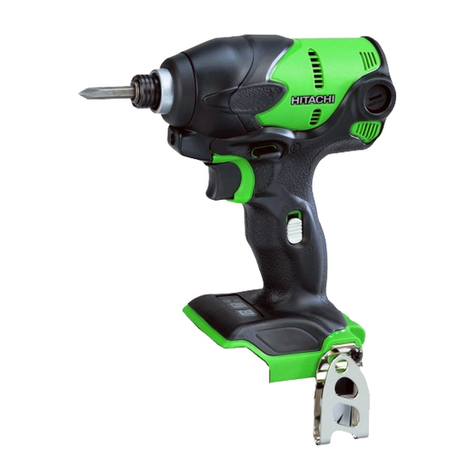
Hitachi
Hitachi WH 14DSL Technical data and service manual

Chicago Pneumatic
Chicago Pneumatic CP8252 Series Operator's manual

Worx
Worx WX279.X Safety and operating manual
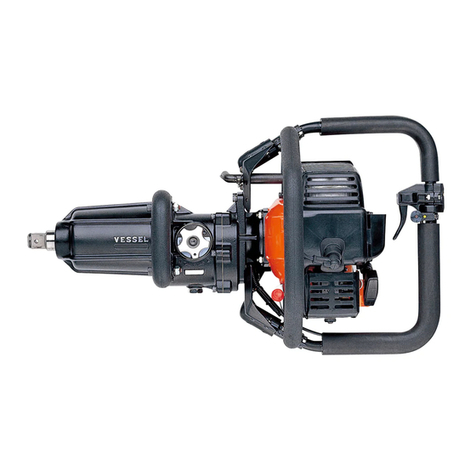
Vessel
Vessel GT-3500GE-V-US instruction manual

Conel
Conel IW 1218VC0 Original operating instructions
